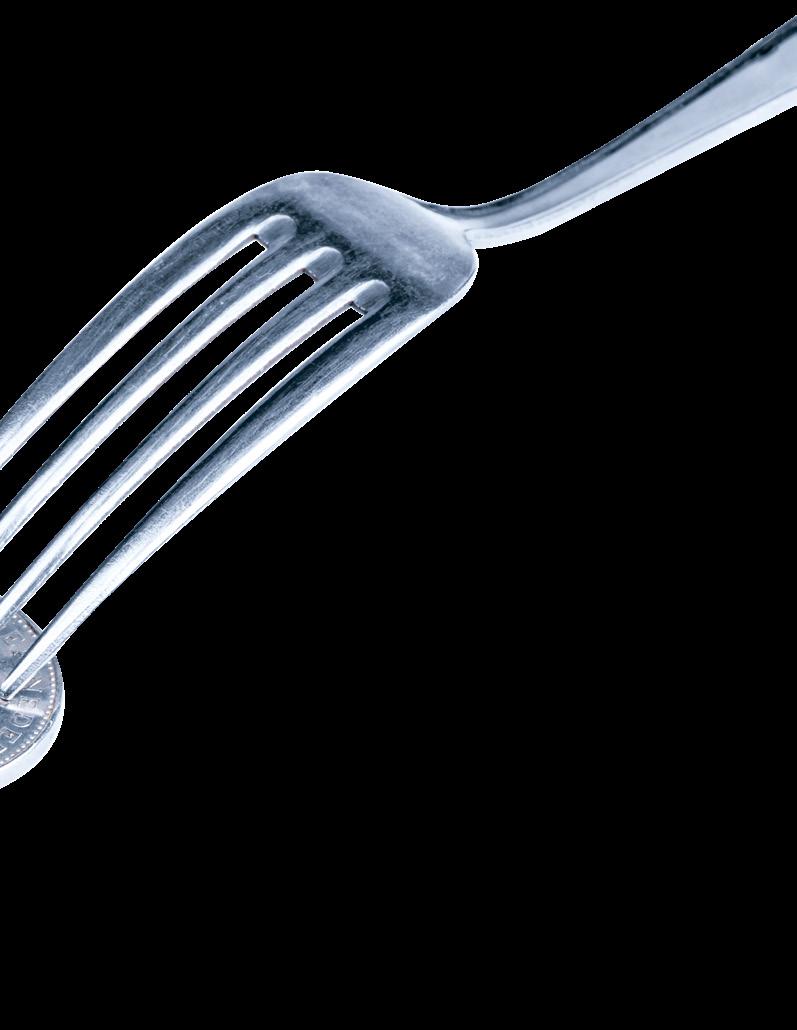
11 minute read
White list” and split payment
In the following article we have presented the issues related to the “white list” of VAT payers and the split payment mechanism. We have highlighted the sanctions imposed on taxpayers who do not comply with the current regulations and present practical problems that taxpayers may encounter.
Advertisement
WHITE LIST OF VAT TAXPAYERS The list of VAT payers (hereinafter: the white list) became effective as of 1 September 2019, however, the tax obligations related thereto appeared in our tax system on 1 January 2020. According to the explanatory memorandum to the bill, the white list was primarily intended to further tighten the VAT system and reduce the risk of accidental persons participating in carousel fraud. The list is maintained in an electronic form by the Head of the National Tax Administration and made available in the Public Information Bulletin. It is also available on the Central Registration and Information on Business website. The list includes only business settlement accounts. PREMISES However, not every transactions requires payments to be effectuated to the listed bank accounts. Two conditions must be met for such an obligation to exist. Firstly, the transaction must be carried out between active VAT payers. Secondly, the value of the transaction must be at least PLN 15,000 – the payment related to a lower value transaction may be made to any account specified by the counterparty. SANCTIONS The problems for taxpayers begin when money is transferred to an account other than one included on the list. In such a situation, the purchaser loses the right to include the paid amount as tax-deductible expense and to deduct input VAT from output VAT. In addition, they will be jointly and severally liable for any seller’s VAT arrears related to the transaction. Thus, the sanctions, given that they apply to transactions over PLN 15,000, may prove extremely severe for entrepreneurs. Therefore, it is of utmost importance for the purchaser of goods or services to verify that the contractor’s account is on the list and to transfer the money to that account. Even in situations where the seller provides the buyer with an account to which payment should be made but which is not on the white list, the buyer will be subject to sanctions. HOW TO AVOID SANCTIONS Sanctions can be avoided by reporting to tax authorities, within 3 days from the transfer date, that payment for the purchase of goods or services was made to a bank account which is absent from the white list. However, even in this case the Ministry of Finance has not made the task easier for buyers – the notification should be sent to the tax office competent for the seller, which may not always be possible to determine. FULL VERSION OF THIS ARTICLE IS AVAILABLE ONLY IN PAPER EDITION OF OUTSOURCING&MORE MAGAZINEOR ON THE PRO PROGRESSIO WEBSITE.

PRACTICAL PROBLEMS Another exception to the rule of sanctioning a payment to a wrong account is when it is made through a split payment mechanism. However, this only protects the purchaser against the seller’s joint and several liability for VAT is such a transaction, and by no means protects against the ban to include the payment as a tax deductible expense for income tax purposes. In practice, doubts have been raised about making payments through plat forms such as PayU or PayPal. In such cases, however, the white list does not apply because, according to Ministry of Finance explanations, the payment is treated as a ‘payment order’ and not as a ‘payment by wire transfer’ which must be made to the account included on the list. The issue of advance payments and instalments also proved problematic in practice. In such a situation, however, the total value of the transaction should be taken into account, and even parts of the transaction which are less than PLN 15,000 should be paid into the bank accounts included on the white list. Doubts also arise as regards receivables setoff. The setoff may occur between parties who are both debtors and creditors to each other. In such a situation, when receivables are due and can be claimed at court, they both can be set off against each other up to the value of the smaller claim. Thus, if the amount before set off was PLN 15,000 or more and the amount after the set off is less than PLN 15,000, the outstanding amount must still be paid into a white list account, as the Ministry of Finance has officially accepted the amount before setoff as binding. SPLIT PAYMENT MECHANISM On the other hand, on 1 November 2019, provisions on the split payment mechanism entered into force, and the obligations related thereto became instantly applicable as of that date. Only sanctions in respect of income taxation came into force as of 1 January 2020. The mandatory split payment mechanism replaced the mandatory reverse charge mechanism in domestic transactions. It should be noted that for cross-border transactions the reverse charge mechanism is still in place. In the explanatory memorandum to the provisions introducing the split payment, the legislator referred primarily to the tightening of the VAT system and ensuring the stability of VAT revenue to the state budget. The basic assumption of the split payment mechanism is to divide the amount resulting from e.g. an invoice into two streams. The first stream is the amount corresponding to all or part of the VAT amount on the invoice – this payment goes to the contractor’s VAT account. The second stream is the amount corresponding to all or part of the net amount (without tax) on the invoice – this amount goes to the taxpayer’s regular bank account (one included in the white list of VAT payers). PREMISES However, for the mandatory split payment mechanism to apply, three conditions must be met. First of all, the subject of the transaction must be the goods or services listed in Annex 15 to the VAT Act – previously, approximately the same goods and services were included in Annexes 11 and 14 to the Act, which referred to the reverse charge mechanism. For example, there are construction services, broadly defined electronics, steel. Also, the amount of the invoice amount must exceed PLN 15,000. In addition, this activity must be performed for an active VAT payer. It should also be noted that split payment applies only to business-to-business (B2B) transactions.


The basic assumption of the split payment mechanism is to divide the amount resulting from e.g. an invoice into two streams. The first stream is the amount corresponding to all or part of the VAT amount on the invoice, the second stream is the amount corresponding to all or part of the net amount (without tax) on the invoice.
28 The white list is maintained in an electronic form by the Head of the National Tax Administration and made available in the Public Information Bulletin. It is also available on the Central Registration and Information on Business website. The list includes only business settlement accounts.
At this point, it should be emphasized that the split payment mechanism applies only to invoiced goods or services from Annex no. 15. That is, in a situation when an invoice for PLN 20,000 is issued, of which PLN 1,000 regards goods listed in the annex and the outstanding amount refers to other, unlisted goods, the split payment will only apply to the goods from the annex.
SANCTIONS The Ministry of Finance has provided for further sanctions to effectively “encourage” taxpayers to apply the mandatory split payment mecha nism for those who fail to apply it duly. First of all, the purchaser may be subject to an additional tax obligation amounting to 30% of the amount for the purchased goods or services from Annex 15 included in the invoice. The same additional tax liability may be charged to the seller for issuing an invoice that does not contain the information “split payment mechanism” (this sanction shall be avoided, if the purchaser neverthe less applies split payment). In addition, as in the case of failure to comply with the white list, the purchaser of the goods or services is jointly and severally liable for the proportion of the value added tax that falls pro-rata on that supply of goods or services resulting from the invoice. In addition, a fine of up to 720 daily rates is provided for failure to apply the split payment mechanism by the person making the payment. Moreover, as of 1 January 2020, additional sanctions have come into force, this time on the grounds of income taxes, under which failure to apply the split payment mechanism, will disqualify the value of goods or services to which the split payment mechanism should be applied from recognition as tax-deductible items by the buyer. Problems have also arisen when making the split payment mechanism in foreign currencies. The Ministry explains that it is not possible to apply the split payment mechanism in a foreign currency. In such a case, the VAT resulting from the invoice should be paid in PLN to the contractor’s VAT account, while the net part can be paid in a foreign currency upon general terms.
PRACTICAL PROBLEMS The above sanctions proved to be the cause of mass “panic” of taxpayers who, for safety reasons, started to issue every invoice with a note “split payment mechanism” and demanded such payment from their contractors even in cases where this mechanism should not be mandatory. However, it should be stressed that in cases where the obligatory split payment mechanism does not apply, and this directly results from the provisions of the VAT Act, the implementation of an optional split payment mechanism depends only on the will of the purchaser. Even in the case of the note “split payment mechanism” present and pressure from the seller, if the obligatory split payment mechanism does not apply, it is only up to the buyer to make use of it.

However, this also works the other way round – the buyer of goods or services is responsible for exercising due diligence. Thus, even if the seller has failed to add the note “split payment mechanism” to the invoice, the buyer is still obliged to check whether the goods or services he purchased are included in Annex 15 to the VAT Act (if the transaction exceeds PLN 15,000). If the purchaser fails to exercise due diligence in the absence of the note, they will still be subject to the aforementioned sanctions.
Doubts have also been raised about factoring, but they are dispelled by the Ministry of Finance. If a buyer of goods or services from Annex 15 pays amount due to a factor, they must also apply the split payment mechanism. However, such payment to the factor gives rise to factor’s joint and several liability with the seller. The factor can avoid liability if it transfers the money received from the buyer through the split payment mechanism to the seller. An exception to mandatory application of the split payment mechanism is set off procedure, as described above. If the set off concerns an invoice containing goods or services from Annex 15 to the VAT Act, the obligatory split payment mechanism does not apply. However, it should be remembered if there is still any amount to be paid after the set off, the difference must be paid by split payment.
To sum up, the introduced regulations bring about unfavourable changes for VAT payers, which in particular can be very burdensome for entities making multiple payments during the month. In addition, the rules are not clear and may lead to many uncertainties. One may have the impression that it was a deliberate action of the legislator, as the current chaos will probably lead to a situation where the split payment mechanism will be used as a precaution, even in situations not required by law.
Authors:
Dorota Chudzik, tax advisor in the Law Firm “Chudzik i Wspólnicy Radcowie Prawni” sp.p. www.chudzik.pl
Bartosz Kędzierski, tax advisor’s assistant in the Law Firm “Chudzik i Wspólnicy Radcowie Prawni” sp.p. www.chudzik.pl
































